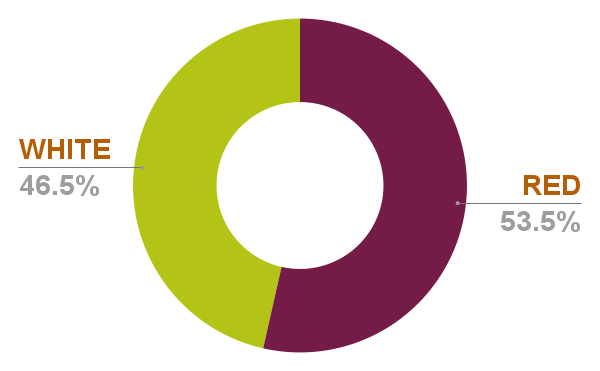By the numbers
-
17AVAs
-
90+Physical Wineries
-
9.95%Total Plantings
-
44,725Acreage Under Vine (Acres)
-
17AVAs
-
90+Physical Wineries
-
9.95%Total Plantings
-
18,099.96Acreage Under Vine (Hectares)

Overview
The Sacramento Valley is a very large area, about the size of the entire U.S. state of Massachusetts, Brittany in France or the country of Rwanda. Naturally, the climate and terrain vary throughout. Generally though, the topography is flat, with some rolling hills. The valley is well inland from the Pacific Ocean and separated from it by extensive mountain ranges.
Due to the San Francisco Bay complex, plus the Sacramento River and the related delta, canals and sloughs, there’s enough maritime influence to moderate temperatures throughout the year. Overall, the Sacramento Valley is cooler and receives more rain than the San Joaquin Valley. A typical year results in 38-64 cm (15-25 inches) of precipitation in the Sacramento Valley, most of which falls during winter.
The most visible, defining feature of the valley is the Sacramento River. The largest river in California, it originates further north, near Mt. Shasta in Siskiyou County. From there, the waterway heads south-by-southeast, gaining in size and losing altitude as it runs through Shasta and Tehama Counties. The grade flattens as the river enters the valley proper, where the waterway serves as the boundary between Butte and Glenn Counties. It eventually makes its way into the San Francisco Bay complex, between Solano and Contra Costa Counties.
Less obvious is that the valley is one the largest geographical depressions in the world, formed when the Pacific tectonic plate slid under the North American plate, beginning about 150 million years ago. Over the next 100 million years, the Sacramento Valley area was a seafloor, so its sub-soils are primarily marine sedimentary. Top soils are mostly alluvial or fluvial.
Agricultural activity in the Sacramento Valley is distributed among four fairly equal segments: row crops (including grapes), rice, tree crops, and pasture. Rice tends to be cultivated in areas where non-permeable subsoils, such as clay hardpan, prevent water from draining and roots from penetrating deep into the earth. The other three segments do best in permeable soils. Usage of any particular plot of land may move between those three segments over time, according to demand, crop value, and the owner’s preference.
The Sacramento Valley includes, or is partially included in 17 AVAs. Three geographically large AVAs capture parts of the valley, but are largely outside of it. The North Coast AVA includes Solano County. The San Francisco Bay AVA includes a tiny portion of Solano County. And the Sierra Foothills AVA includes Placer and Yuba Counties.
The AVAs of Sacramento County are Lodi and five of its nested AVAs: Alta Mesa, Borden Ranch, Cosumnes River, Jahant, and Sloughhouse. The southern portion of the Lodi AVA, its nested Mokelumne River and Clements Hills AVAs, and portions of Borden Ranch and Jahant are in San Joaquin Valley.
The Clarksburg AVA lies within three counties: Sacramento, Solano, and Yolo.
The other AVAs of the region, by county, are: Solano County: Green Valley of Solano County, Suisun, Wild Horse Yolo County: Capay Valley, Dunnigan Hills, and Merritt Island Yuba County: North Yuba
Counties with the most hectares under vine are Sacramento, 9,247 ha (22,850 acres) and Yolo, 9,332 ha (23,060 acres). Solano County is a distant third, with 1,504 ha (3,716 acres).
